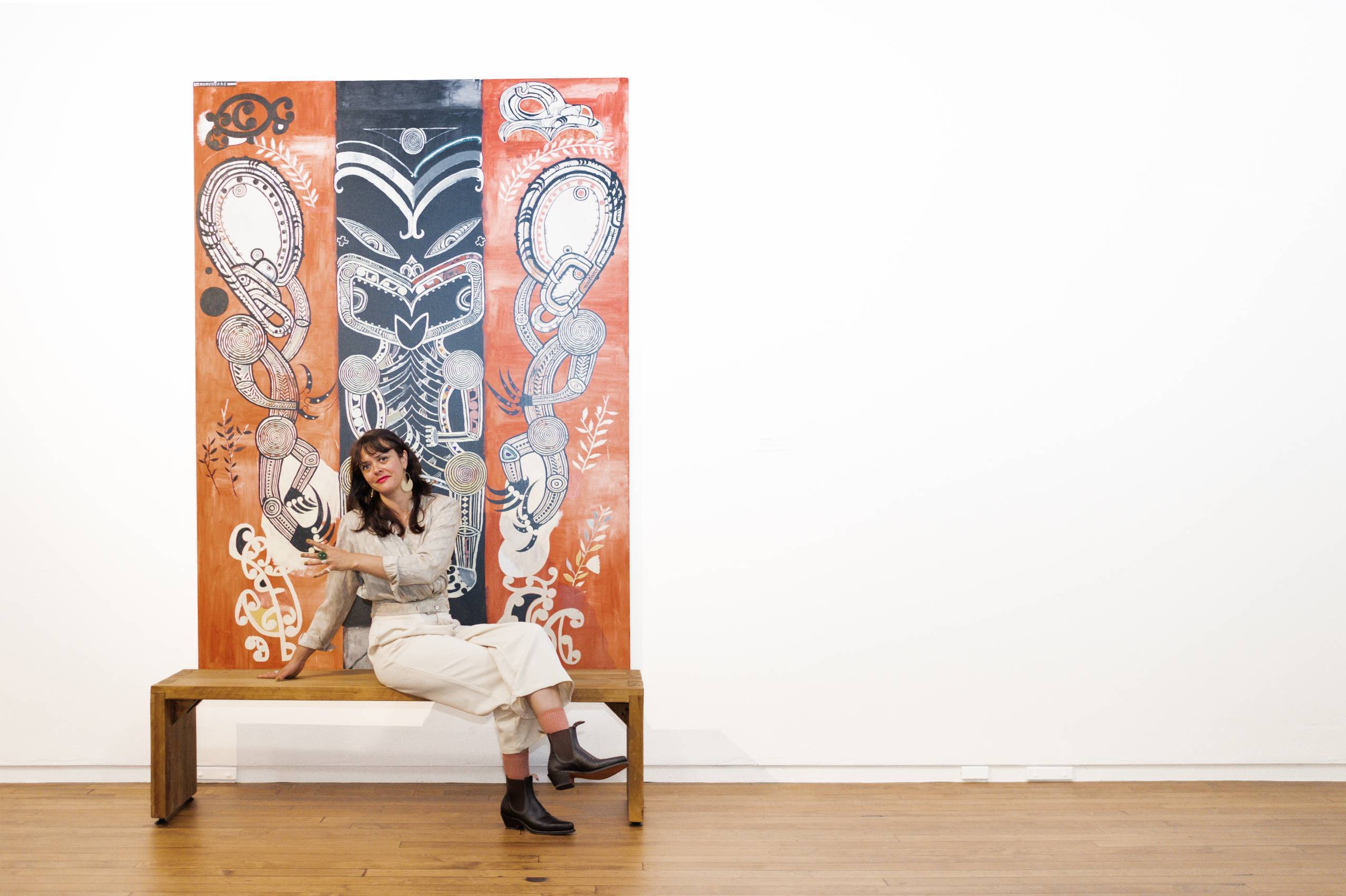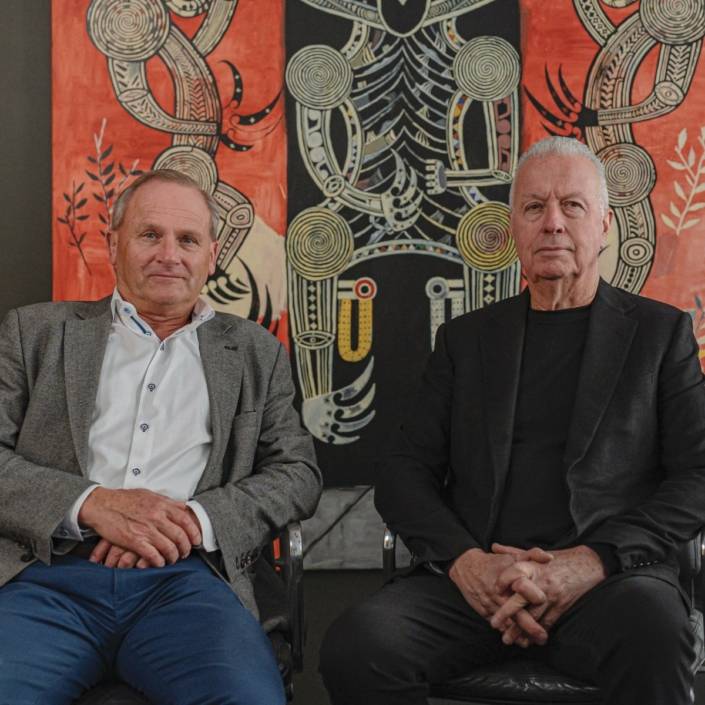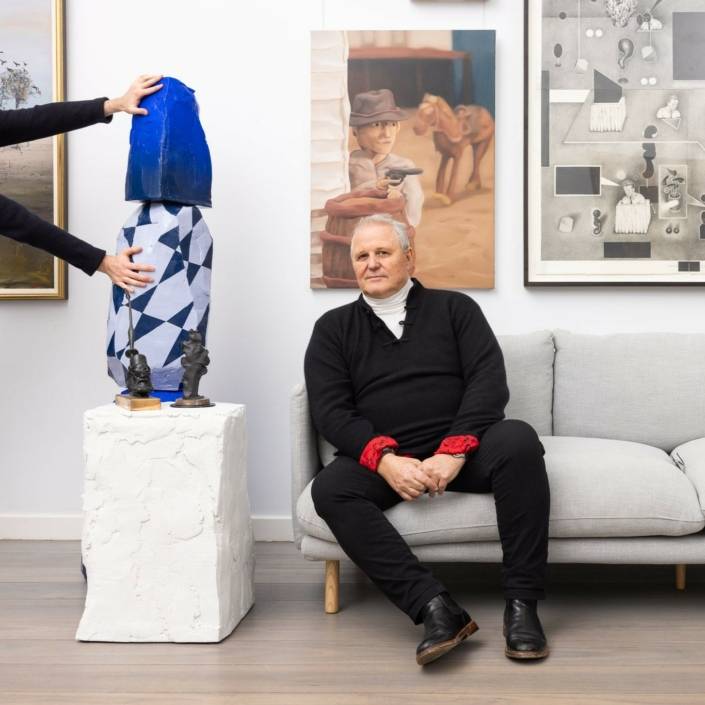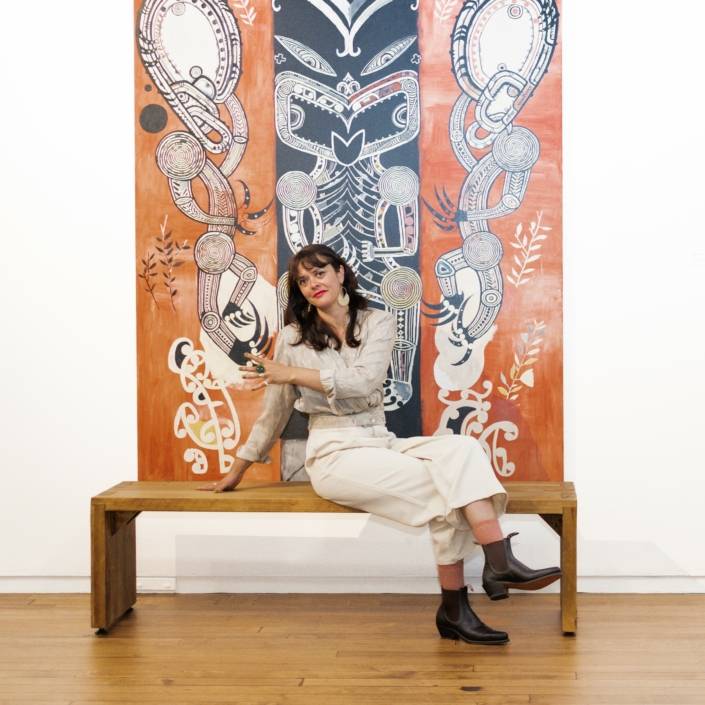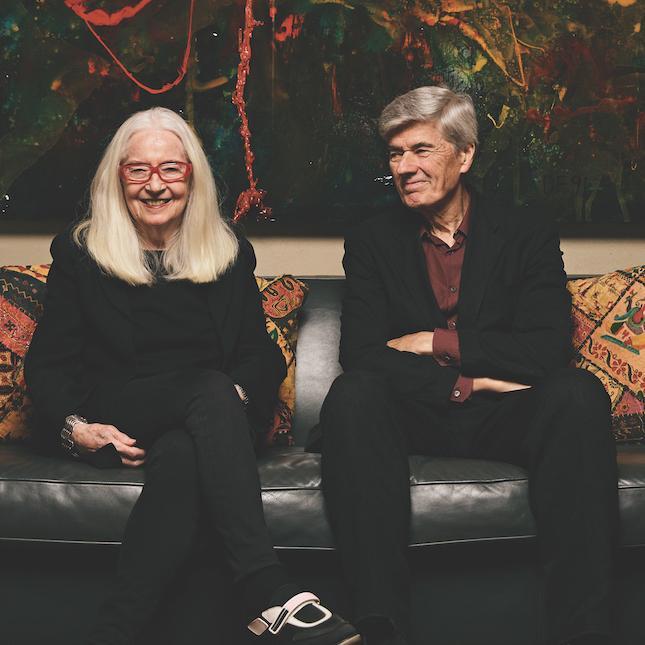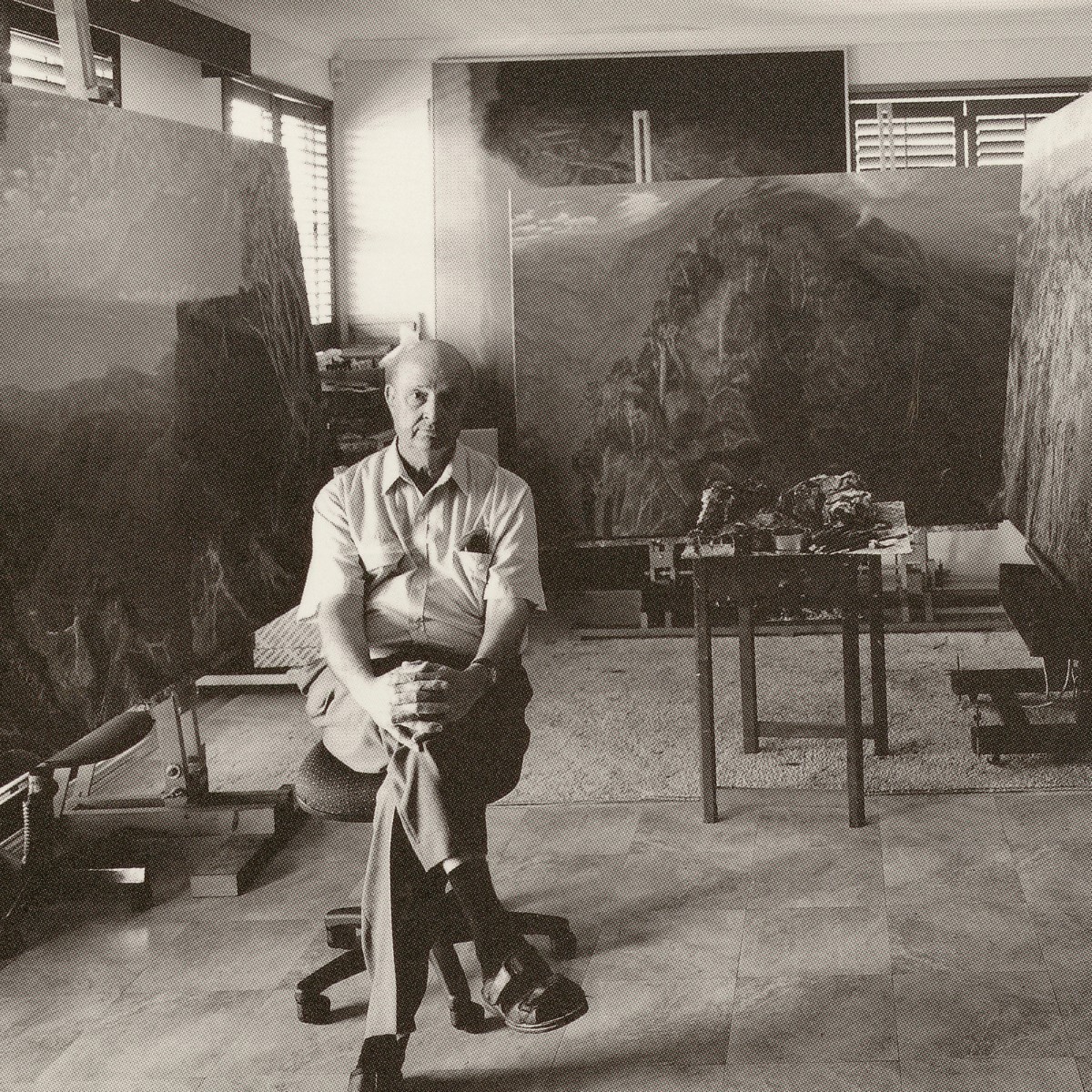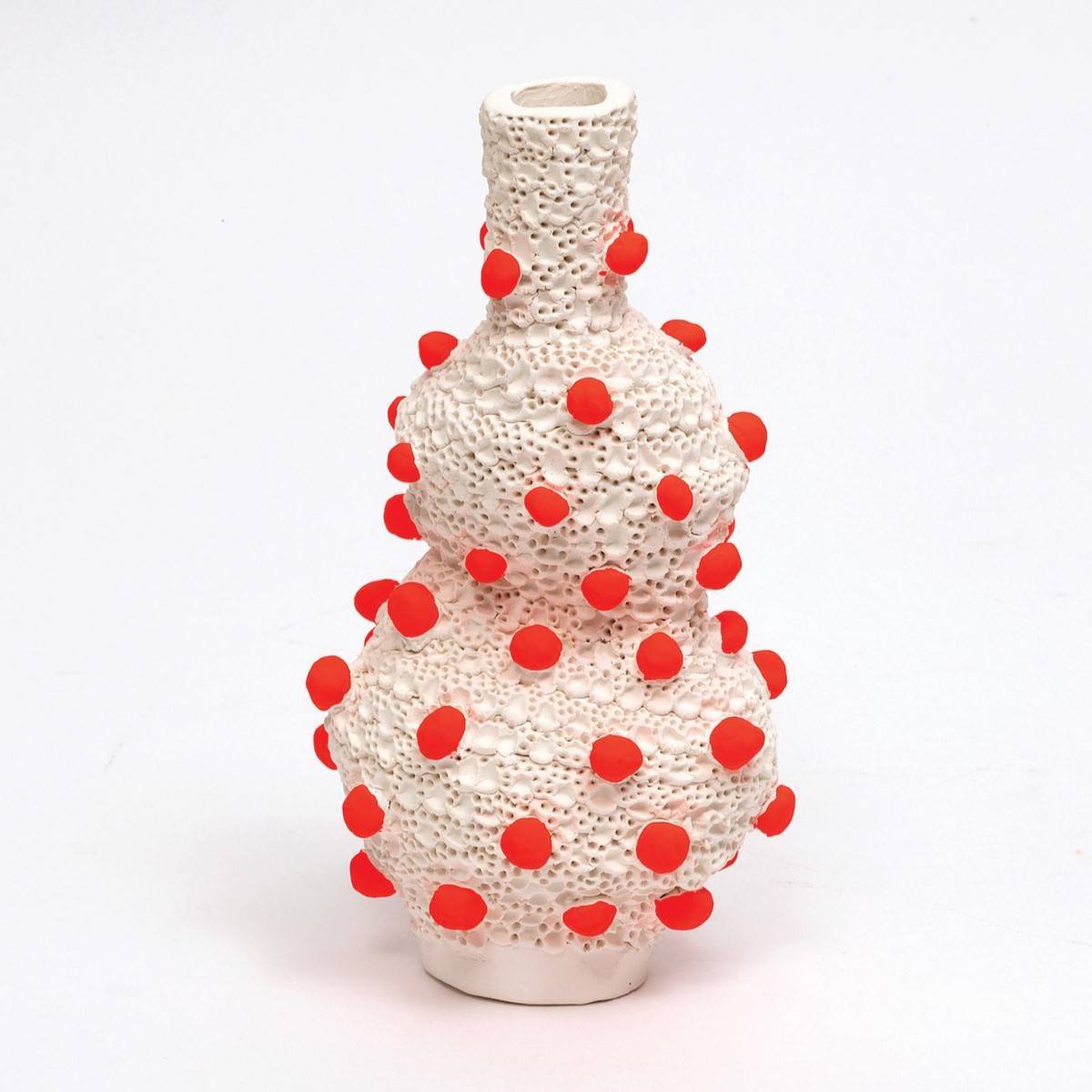First Foot Forward
Larissa McMillan, director of the first public art gallery in the world dedicated to Maori art, sees herself as part of an exciting global revitilisation of Indigenous arts.
Words: Piupiu-Maya Turei
Photography: Michelle Marshall
Larissa McMillan told me about a group of local Māori who came into the recently opened Wairau Māori Art Gallery from a kura (school) in the small township of Panguru to visit Shane Cotton’s exhibition Kei Muri Ngā Mea i Te Rā. “Like most Māori entering institutions, at first they were hesitant. But as they explored the exhibition, they saw names they recognized like Panguru and Ngāpuhi ancestors, and their confidence in the space grew,” says McMillan. This powerful experience of seeing themselves and their whānau (families) represented in high quality contemporary art is a highlight for McMillan, and exemplifies the power of art to instil a sense of pride in their identity as Indigenous people.
McMillan has whakapapa (genealogical connections) to Ngāpuhi and Te Parawhau, both Indigenous tribes of Aotearoa New Zealand. I spoke to her through video call about her role as Te Ringa Hautū Toi (Gallery Director) of Wairau Māori Art Gallery, the first public art gallery in the world dedicated to Māori Indigenous art.
The gallery is situated in Whangārei on the lands of Te Parawhau and under the korowai (cloak) of the Hundertwasser Art Centre. Whangārei is the northernmost city of Aotearoa New Zealand, and on the bank of the Hātea river there is an enigmatic building designed by architect and well known artist Friedensreich Hundertwasser. He emigrated from Europe to Aotearoa in 1976 and settled into northern Aotearoa where he would live until his death in 2000. In 1993, he designed an art centre to be built in Whangārei. As part of this art centre, a Māori-led art gallery was proposed by Joram Harel, the chair of the Hundertwasser Foundation in Vienna. This became the Wairau Māori Art Gallery and its foundation is built upon uplifting Indigenous voices, ideas and tikanga Māori, (the indigenous methodologies of Aotearoa).
McMillan told me one of the joys of being Te Ringa Hautū Toi is that she actively supports the future of Māori contemporary art daily. It is a complex role and she is grateful for the support of the Wairau Māori Art Gallery Charitable Trust Board. Featuring 11 prominent Māori arts practitioners, such as Dr Benjamin Pittman, one of the first Māori to graduate with a degree in Fine Arts, and who recently passed away. McMillan shared that there is a strong sense of unity between the board, herself, the artists and the visitors to the gallery. “We are all working together towards the same goal,” she says. “There is so much knowledge within the board, it is inspirational to be working with them.”
The strength of the board enables her to work from a strong Māori mandate. Wairau Māori Art Gallery is a wholly Indigenous space and that is what gives it firm anchorage and allows for Indigenous excellence. As an example of this in action, McMillan spoke about how each exhibition has a lead curator with an emerging curator working alongside them. “It uses a kaupapa Māori methodology called Tuakana / Teina, where knowledge is shared both ways between the lead curator and emerging curator,” she explains. This is both enacting tikanga Māori practices and future-proofing Māori curatorial and art writing practice.
Wairau Māori Art Gallery has three exhibitions per year, and McMillan took a break during the installation of their new exhibition to chat to me. Te Whanga a Reipae features six leading contemporary Māori artists (Jeremy Leatinu’u, Tracy Keith, Amorangi Hikuroa, Raukura Turei, Aroha Gossage and Star Gossage), and examines the way whakapapa is a connecting force between people in the past, present and future. Ngahuia Harrison is making her curatorial debut, and Harrison describes the gallery model as representing a model of trust and uplifting te Ao Māori (Māori world views). McMillan points out that although Wairau is a Māori art gallery, they would love to explore exhibiting other Indigenous artists in the future. “There is a global revitalisation of Indigenous arts that has been gathering momentum, it’s very exciting to be a part of that!”
This article was originally published in Art Collector issue 104, April – June 2023.

